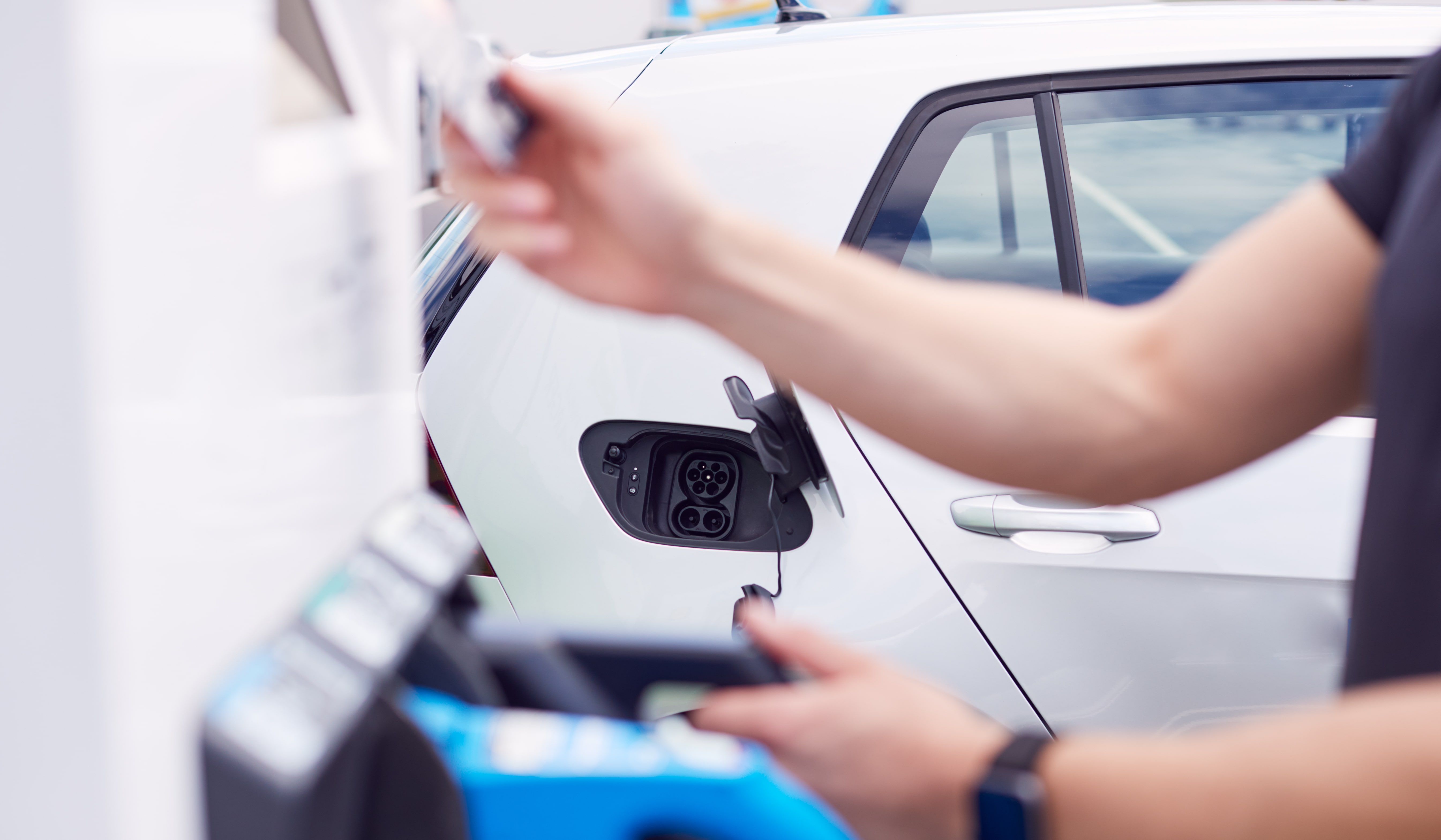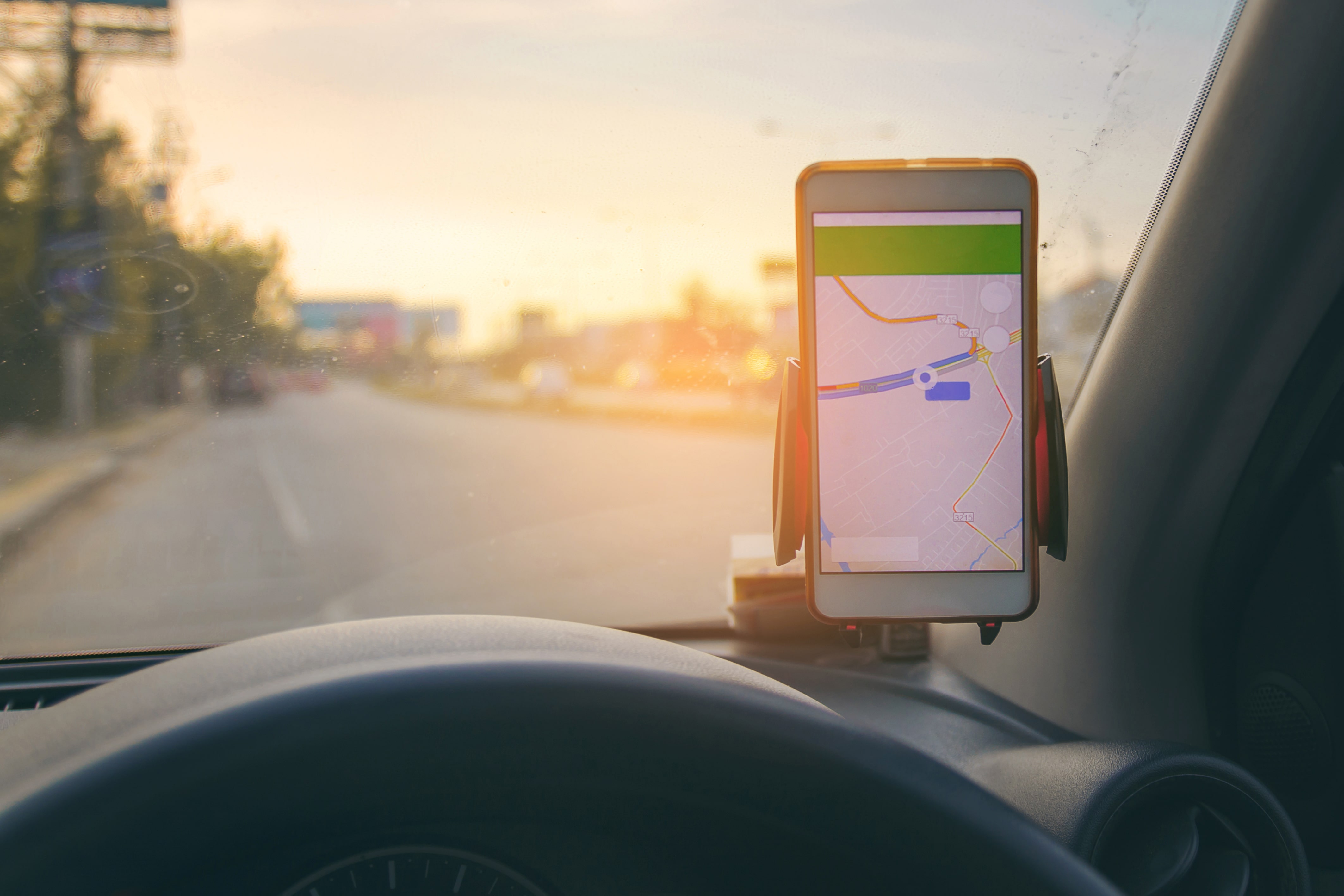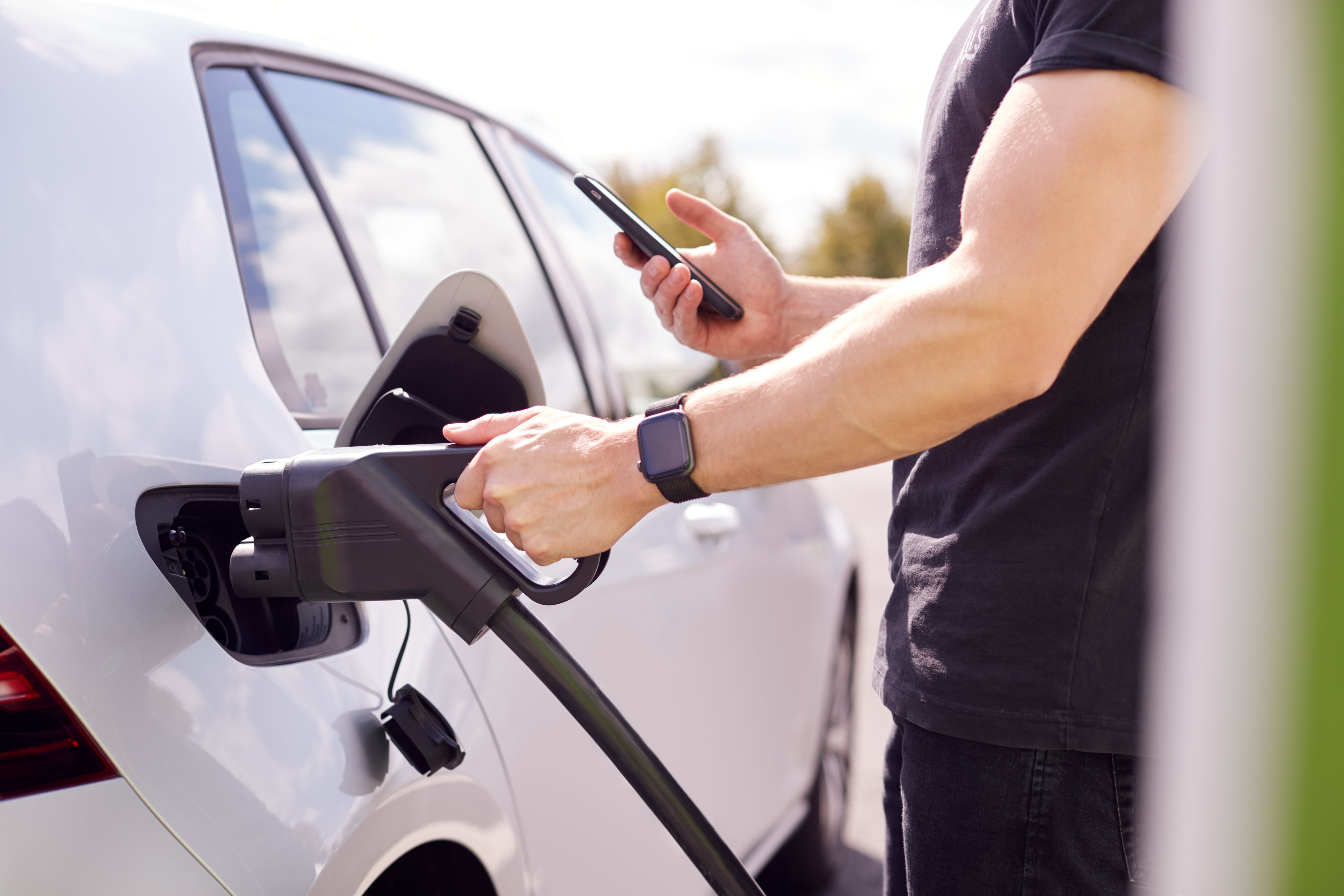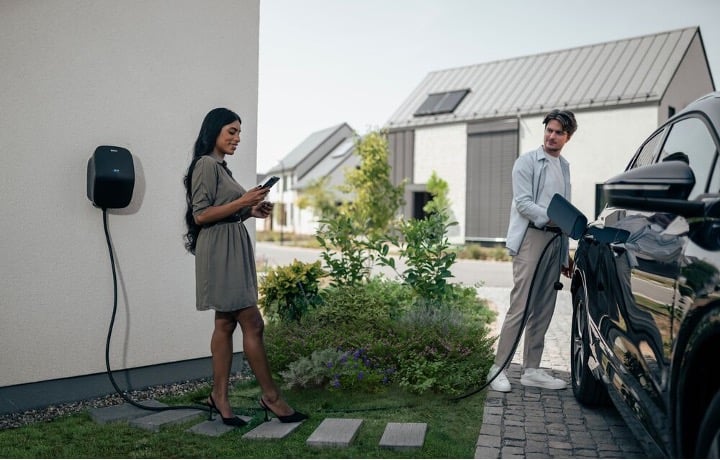
There’s no doubt that fast charging is a convenient, useful tool that enables you to make the most of your EV. But if you’ve never used a fast charging station before, the thought of handling a few-hundred-kilowatt current can be daunting. Especially as fast charging stations come in many shapes and work in different ways.
This article will explain how to use a fast charging station and guide you through the process with the following 5 easy steps:
- Locate a fast charging station
- Get the cable
- Connect the car to the charging station
- Authenticate and start the session
- End the charging session
Click on of the steps to jump right to it, or scroll down as we’ll explore the nuances of using a fast charging station in more detail below.

What is fast charging?
If you’re planning to go on a long-distance trip with your electric vehicle (EV), you’ll most likely want to use a fast charging station at some point to quickly top up your car’s battery.
Fast charging, also called Level 3 or DC charging, delivers high-powered current that can unlock much faster charging speeds – charging an EV using a fast charging station usually takes minutes rather than hours.
If you’ve ever tried searching for a fast EV charger, you might have experienced the jumble of terms that surround the concept, from rapid charging to fast and ultra-fast charging and level 3 or DC charging.
So what’s the difference between these terms?
In reality, not much. They all refer to the same thing – DC fast charging. The reason this type of charging is much faster has to do with the power output and the type of current.
While output varies between charging stations (and depends on your car’s ability to handle high power outputs), generally, the higher the output, the faster an EV’s battery will be charged. Compared to a typical home charger which usually delivers 7.4 kW or 11 kW, fast charging stations are capable of delivering anywhere from 50 kW to 400 kW.
The second factor that differentiates fast charging stations from home chargers is the type of current. As the name hints, “DC” in “DC fast charging” refers to direct current. Unlike alternating current (AC), which alternates a set number of times a second, DC flows at a fixed rate. All electronics, including EVs’ batteries, require DC to operate – while the car’s onboard charger handles the conversion with AC charging, fast chargers handle the conversion themselves and feed DC directly into the car’s battery, allowing it to bypass the slower onboard converter.
Now that we’ve explained what makes fast charging different, let’s look at how you would use a fast charging station.

How to charge at a fast charging station
1. Find a fast charging station
Before thinking of actually using a fast charging station, the first step is to locate one. Unlike gas stations, EV chargers tend to be less visible and can often be hidden in parking lots or behind a building. The easiest way to find a fast charging station is by using an app.
There are many dedicated charging apps to choose from, depending on your region, EV model, and charging habits. These generally offer useful information about the speed, availability, and the number of charging stations, letting you know what to expect and allowing you to plan ahead.
Alternatively, many mainstream map apps, such as Google or Apple Maps, also show EV charger locations.
Regardless of which method to use, it’s worth keeping in mind that no matter how powerful a charger is, the maximum power it will be able to deliver is limited by your car’s charging capacity. For instance, while many fast charging stations are now capable of outputting 400 kW, most EVs can only take up to around 125 kW to 150 kW. If you’re unsure about your car’s capacity, you can search for your model’s specs here.
Also, every charging station goes through rigorous testing and complies with all measures in regard to safety before it’s allowed to be in use, which makes the station safe to use regardless of the high current.

2. Get the cable
Once you have located and arrived at a fast charging station, the next step is to find the charging cable. Unlike home and AC public chargers, fast chargers always have a built-in, non-removable cable. This is because it needs to carry much higher power, which often requires active cooling – to enable these high currents to run through these cables safely, a fast charging cable is much thicker and heavier than your typical home charging cable.
Given that the cable is always built-in to the station, the only aspect to check is whether the cable’s plug fits with your EV’s socket. Generally, this is standardized across regions, but you can check your EV’s connector here.

3. Connect the car to the charging station
If your car’s charging port matches the cable’s plug, you can connect the two. Note that you might need to lift a flap to reveal the entire fast charging connector, which is usually different and bigger than the AC charging port. While the charging port is usually located on the rear side of an EV (similar to a fuel cap), some models place the socket in other locations, such as at the front bumper. It’s worth checking that you’ve parked your car correctly and will be able to reach the charging port with the cable.

4. Authenticate and start the session
After you’ve connected your car to the charging station, the next step is to start the charging session. Exactly how you start varies depending on the station and its operator, but you will generally need to authenticate yourself through an app or a fob.
This lets the station arrange payment and charge the correct amount to your account. In some cases, fast charging stations can have built-in card readers, allowing you to start charging immediately without needing an app or account. Once you’re authenticated or have made the payment, charging will start automatically.
Regardless of how you decide to pay, you’ll likely find that fast charging tends to cost more than home charging or AC public charging. This is because, on top of the kilowatt price of electricity, fast chargers usually add a premium for the speed and convenience of their service and to recoup their significant upfront investment.
5. End the charging session
When your car reaches the desired battery level, it’s time to end the session. How you end charging depends on how you started it. For instance, if you authenticated yourself through an app, you can use it to end the session. Alternatively, if you started the session using a fob, you will likely need to tap the fob again to end it.
In any case, most fast charging stations will come with interactive displays that show you the session’s status and often allow you to end charging directly from the station. Keep in mind that you can’t just take out the charging cable without ending the session, as it is locked onto your car. Even once charging is ended, you might also need to unlock the port directly from your car.
Finally, you need to put the charging cable back into its socket on the charging station, and you’re ready to go!
.jpg?width=1400&height=1102&name=EVBox_Troniq%20Modular_Simultaneous%20Charging%20(1).jpg)
As electric vehicles become ubiquitous, the demand for fast charging will only increase in the coming years. While it can be a new and unfamiliar experience, we hope the above guide provided you with a helpful overview of using a fast charging station.
If you’re new to electric mobility, you might also have questions about home or public charging. Check out our dedicated blogs about how you can charge at home and at a regular public charger to answer your questions on the topic.
Related articles

Smart Charging for Solar EV Systems: What is possible today?
There are a variety of smart solutions available, capable of optimizing your solar EV charging system in different...

Can solar EV charging save you money?
Charging your EV using household solar panels can indeed save you money on your utility bills. How much money solar EV...

How to optimize your solar set-up for charging electric cars at home
There are several ways EV drivers can optimize a homegrown solar system to ensure their EV recharging needs are met....